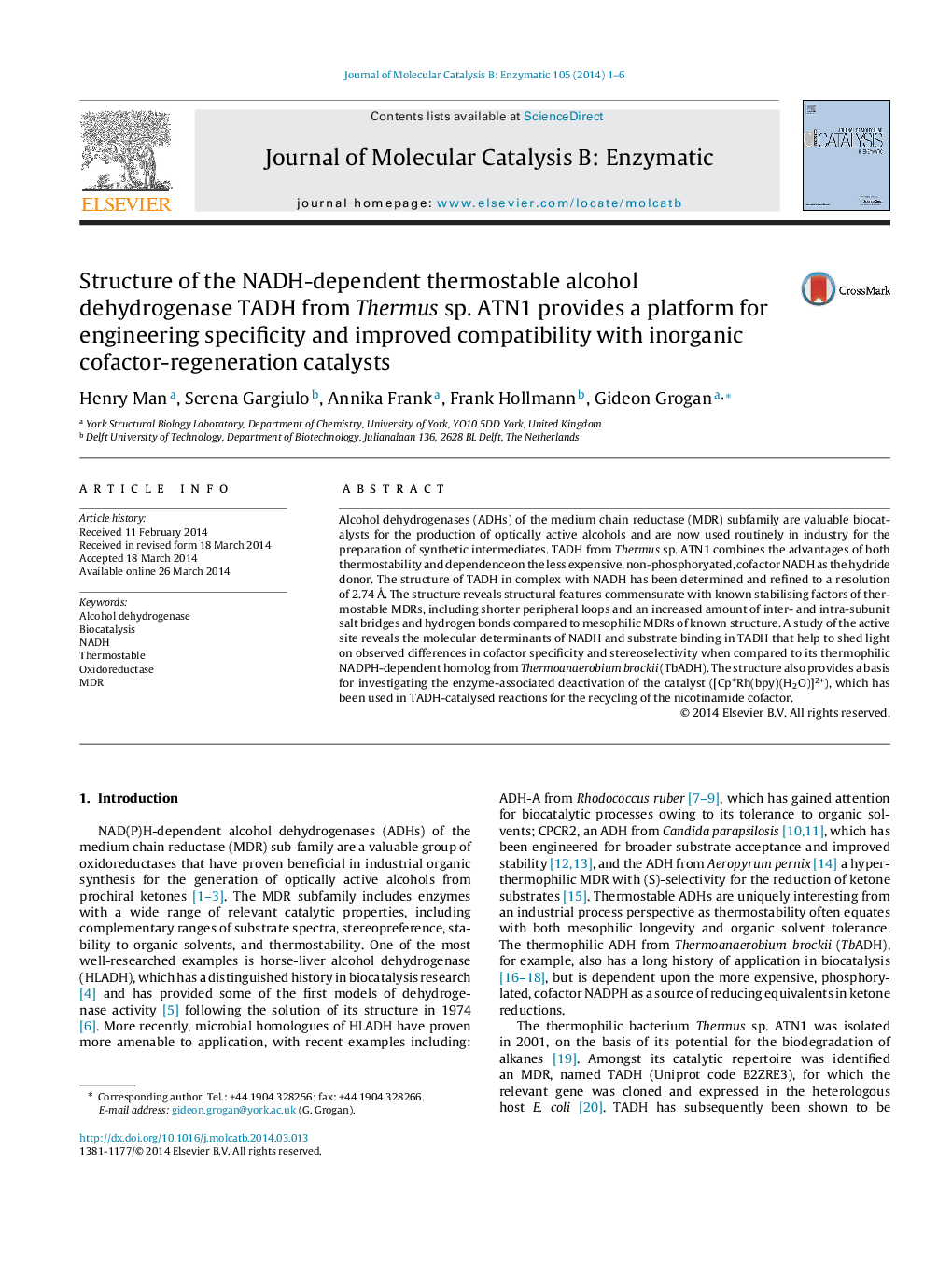| کد مقاله | کد نشریه | سال انتشار | مقاله انگلیسی | نسخه تمام متن |
|---|---|---|---|---|
| 69823 | 48795 | 2014 | 6 صفحه PDF | دانلود رایگان |

• The structure of the thermophilic NADH-dependent alcohol dehydrogenase has been solved and refined to a resolution of 2.74 Å.
• The structure reveals an absence of peripheral loops and an abundance of salt bridges and hydrogen bonds that are likely to enhance thermostability.
• A model of the substrate phenylacetone within the TADH active site reveals the basis for (S)-enantioselectivity in the enzyme.
Alcohol dehydrogenases (ADHs) of the medium chain reductase (MDR) subfamily are valuable biocatalysts for the production of optically active alcohols and are now used routinely in industry for the preparation of synthetic intermediates. TADH from Thermus sp. ATN1 combines the advantages of both thermostability and dependence on the less expensive, non-phosphoryated, cofactor NADH as the hydride donor. The structure of TADH in complex with NADH has been determined and refined to a resolution of 2.74 Å. The structure reveals structural features commensurate with known stabilising factors of thermostable MDRs, including shorter peripheral loops and an increased amount of inter- and intra-subunit salt bridges and hydrogen bonds compared to mesophilic MDRs of known structure. A study of the active site reveals the molecular determinants of NADH and substrate binding in TADH that help to shed light on observed differences in cofactor specificity and stereoselectivity when compared to its thermophilic NADPH-dependent homolog from Thermoanaerobium brockii (TbADH). The structure also provides a basis for investigating the enzyme-associated deactivation of the catalyst ([Cp*Rh(bpy)(H2O)]2+), which has been used in TADH-catalysed reactions for the recycling of the nicotinamide cofactor.
Figure optionsDownload as PowerPoint slide
Journal: Journal of Molecular Catalysis B: Enzymatic - Volume 105, July 2014, Pages 1–6